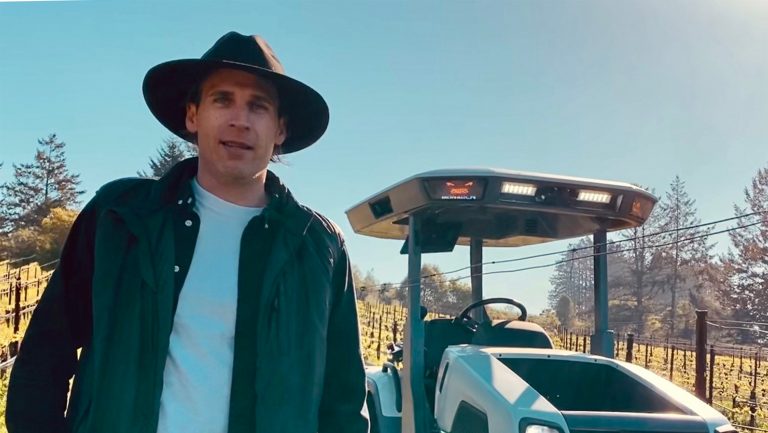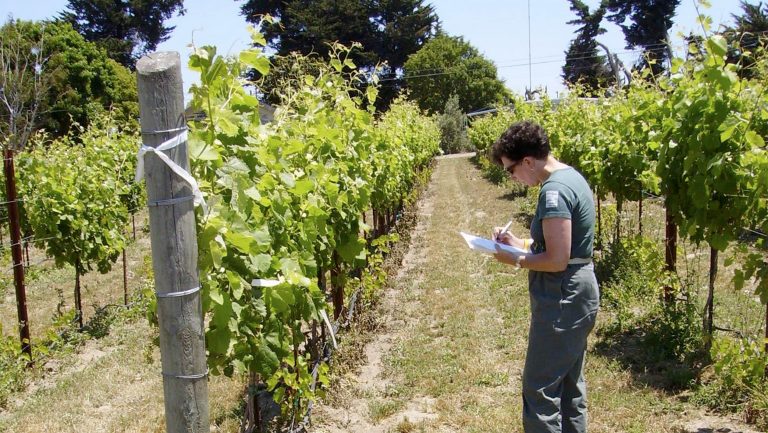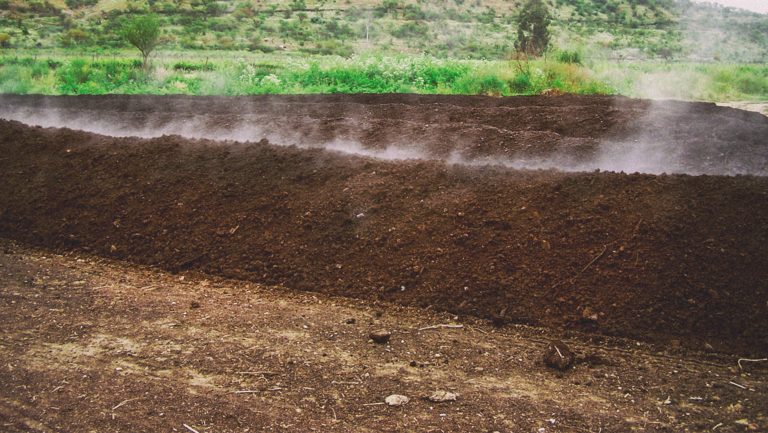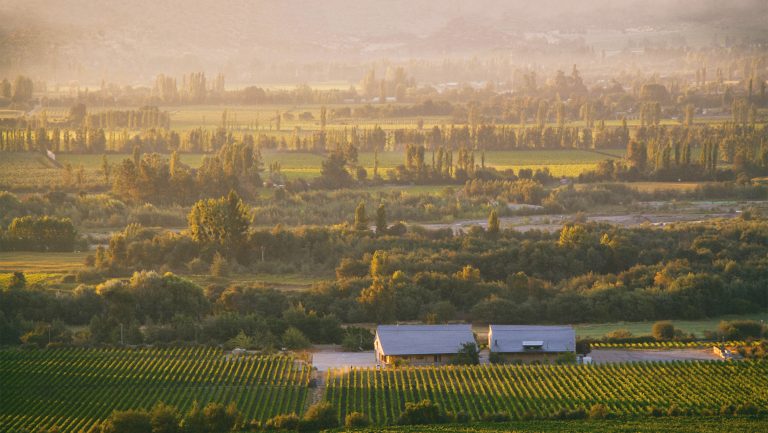From $4 Trader Joe’s organic wine to high-end Bordeaux, growers and vintners are seeing that organic farming costs are not the barrier they were once considered to be. More experience and know-how, improved materials, and new equipment have created better production methods that can make organic as financially profitable as farming conventionally—and sometimes more so.
In the past, financial experts assumed that organic farming meant extra input costs: extra tractor passes, extra labor, extra materials, and extra equipment. It could also mean lower yields during transition years. While cost estimates range widely depending on vineyard pests, site, climate, and skill of the grower, rising consumer demand and longer-lasting, healthier vines are proving to offer a healthy return on investment for organic grape farming.
Cost Perceptions vs. Reality
It’s tricky to pinpoint the cost of organic farming versus conventional on a broad scale. Some growers say it costs 20 percent less for inputs to farm organically, while others say it costs 30 percent more for inputs. For some, challenges like leafhoppers and mealybugs cannot be overcome, while for others, they can. Site, climate, terroir, and experience of grower are all also significant factors.

Don’t miss the latest drinks industry news and insights. Sign up for our award-winning newsletters and get insider intel, resources, and trends delivered to your inbox every week.
But across California, organic farming is rapidly gaining ground. In Monterey County, Scheid Vineyards is in the middle of a 3,000-acre conversion to organic, with plans for distribution partner Whole Foods to sell the newly minted wines. Inland in the San Joaquin Valley, wine giant Bronco Wine Co. converted 8,000 out of its 40,000 acres to organic for its Shaw Organic wines sold at Trader Joe’s for $4 per bottle.
“Organic weed control is pretty much the same cost,” says Luca Brillante, Ph.D., assistant professor of viticulture, Bronco viticulture chair at California State University, Fresno and a key advisor to Bronco Wine Co.’s conversion. “Conventional herbicides are costly. Fertilizer is a little more expensive in organic, but fungicides are a little bit less expensive in organic. So overall, the management costs are actually about the same.”
The number of tractor passes has traditionally been a point of contention in organic farming cost comparisons. Conventional growers say that by using more synthetic materials, they make fewer tractor passes, which means lower labor costs and diesel use.
But according to experienced organic growers like Steve Matthiasson, the proprietor of Matthiasson Wines in Napa, using preventive measures eliminates the need for extra passes. “If you look at our organic clients, we’re spraying five to seven times—just like at our conventional clients—but we’re being really smart about disease risk and plant resistance to reduce our sprays, rather than just this blanket-spraying the whole freaking season,” he says.
Nonetheless, one high-end vineyard consulting company in Santa Barbara County charges 30 percent more to farm organically. “Ridiculous,” says Matthiasson. “We charge our conventional and our organic clients the same.”
Achieving Comparable Yields
However, the yields for Bronco’s organic vines (previously boosted by synthetic fertilizers) are slightly lower, producing 30 percent less in a region known for pushing the max on tonnage.
“The conventional Central Valley growers are masters of getting big yields with NPK [fertilizer with synthetic nitrogen, phosphorus, and potassium], but the system is more like hydroponics than soil-based farming,” says Matthiasson, who worked as a vineyard consultant in the San Joaquin Valley region for four years earlier in his career.
Yields here are often 10 to 15 tons to the acre for conventional or 10 to 12 tons for established organic growers. (A grower in conversion may only get 7 to 10 tons per acre for vines that have previously fertilized with synthetic nitrogen, a material that requires huge carbon intensive inputs to manufacture.)
In Chile, Emiliana CEO Cristian Rodriguez says yields are always the big fear when a grower contemplates going organic. The rapidly expanding company produces one million cases of organic and biodynamic wine for export to 50 countries—with rising profits. The second-biggest organic brand sold in the U.S., their Natura wines retail for $11. “I can tell you after 25 years of farming organically, we know our yields are comparable to conventional,” says Rodriguez. “With good clones and compost, and good farming on the right site, organic vine yields are competitive.”
In comparing organic versus chemical farming, Rodriguez says labor is the biggest expense for all wineries—a factor that isn’t impacted by organics.
“In vineyards, there are two seasons in which we spend the most money—pruning and harvesting,” he says. “And we harvest more than 80 percent of our grapes mechanically. So for labor, there is no difference if you’re organic or not.”

The Payoff of Vineyard Longevity
Vineyard longevity is another huge cost consideration. Replacing a vineyard at 15 to 20 year intervals comes at the cost of replanting and waiting three years for a crop. Organic growers report that their organic vineyards typically last longer.
“There’s a concept problem here: a lot of people think that you get less crop, which is not true. The organic vines live longer, and they’re actually more resistant to disease progression,” says Mark Neal of Jack Neal & Son in Napa, which has been in the organic vineyard management business since 1984.
“When you’re using synthetics and you’re using herbicides, you’re hurting not only your soil’s microbiome, you’re hurting the plant that you’re farming,” adds organic champion Carlo Mondavi, proprietor of Sonoma-based Raen Wines. “If you are farming a perennial with chemicals, chances are that you will have to replant in 15 years or 20 years versus having organic vines that can last a lot longer, because they’re healthier and sturdier.”
Matthiasson agrees. “You have to look at it in your annual operating costs and then you also have to look at the useful life of the vineyard,” he says. “There’s a lot of agricultural research that healthier soils lead to plants that are more resistant to plant pests and diseases and more resilient to drought.” He measures soil health by factors like bulk density, water infiltration, organic matter, and biological activity, among others, and has found that using cover crops and compost creates healthier soil.
“If you gain a decade more in your vineyard, obviously, that’s a really good economic model,” says Mattthiasson.

Better Organic Materials and Tools
As organic farming has grown, so have the products that support it, making organic farming more feasible and profitable than it once was.
“When it was just North Coast hippies, we had such a small amount of organic materials available to us,” says Matthiasson. “Now more and more tools are available. For example, we now have really good phosphorus fertilizers. A decade ago, we didn’t. And even the conventional guys are using them now.”
Credit former Monsanto entomologist-turned-biopesticide entrepreneur Pam Marrone in Davis, California for bringing many of the new organic, biological plant protection products to market—first the organic fungicide Serenade at Agraquest (now owned by Bayer) and then Grandevo, Regalia, and Sonata under her own company, Marrone Bio Innovations. These organic products are gentler and safer, and are now widely used by many conventional growers, too. Marrone and others are eagerly awaiting EPA review on new organic herbicides.
Opting for organic materials is also attractive to consumers, who have changed the way they feel about the popular herbicide Roundup after recent, widely publicized trials that found it caused cancer.
“No one wants to get caught using Roundup these days,” says John Roncoroni, a top weed control expert in Napa and farm advisor emeritus at University of California Cooperative Extension.
Organic growers who may spray more frequently than their conventional counterparts are also excited about the advent of the electric, self-driving Monarch Tractor, which can be powered with on-farm solar panels—essentially, free electricity. Led by former Tesla execs and organic champion Mondavi (who is also Monarch’s chief farming officer), the company’s powerful $58,000 tractor has state-of-the-art cameras, sensors, and robotics.
California wineries are lining up to buy them, many with subsidies from the California Air Resources Board, which enables growers to purchase the Monarchs very inexpensively.
“I don’t know one farmer on this planet that wakes up in the morning and says, ‘I want to go out and farm conventionally, I want to use chemicals, I want to use herbicides,’” says Mondavi. He says that the new tractors, equipped with cameras and smarter sensors that enable better data collection and intelligent systems, can flip the culture of using pesticides to advantage organic.
“What if you didn’t have to use chemicals at all? What if you could use UV lights for fungal pathogens, when they were present?” he posits. “And then what if you didn’t have to spray because you knew that they were not present? When you have data capabilities on your tractor, you can collect data to be able to give you insights on what you need to do next.”
“It’s all a matter of economics and convenience,” adds Mondavi. “If we can get rid of those economic divides, which is what the Monarch tractor does, that is literally my dream.”

Competitive Advantages in the Market
But profitability isn’t just about costs—it’s about revenue as well. Recent studies have suggested that the market for organic wines is stronger than for conventional ones.
A recent study conducted by wine economist Olivier Gergaud, a professor at Kedge Wine Business School in France, surveyed more than 7,000 producers in the Vignerons indépendants de France (VIF) in 2019 and found that organic and biodynamic producers did better financially than conventional and sustainable vintners.
“It’s usually more profitable in France to produce organic wines or biodynamic ones than conventional wines,” he says, noting that the flow of profits is generally more stable for organic and biodynamic wines than for conventional ones.
“Demand is higher and growing at larger and stronger speeds than the supply,” he adds. “In some places, when you talk to some wine storekeepers, it’s hard for them to secure access to these wines because they are in high demand.”
Organic and biodynamic wines were also shown to achieve higher scores in a 2021 study published in the journal Ecological Economics (also by Gergaud along with Magali Delmas of University of California, Los Angeles). Looking at 128,000 wines ranging in price from $5 to $450, it found that more than 30 French wine critics over a 20-year span rated certified organically grown wines six points higher on average than conventional or sustainable wines. For biodynamic wines, scores were 12 points higher on average than conventional or sustainable.
While French growers can earn much higher prices for their organic grapes compared to conventional, organic growers in the U.S. have faced advantages of a different kind: Having welcome buyers in a time of oversupply. Dave Koball, a long-time vineyard manager in Mendocino, says organic growers there were worried when a major organic wine brand started buying its organic grapes for cheaper elsewhere in the state.
But Mendocino’s organic growers are seeing that new smaller labels or direct-to-consumer brands promoting “clean wines” want their grapes. “The guys say, in the last couple of years, if it was organic, we could sell it,” he says. “But conventional—it won’t even get touched.”

Healthy Profits Ahead for Organic Wines
Putting it all together, organic and biodynamic vintner Robert Eden of Château Maris in Languedoc says these greener farming systems offer an attractive package of benefits: higher grape and wine quality, vineyard longevity, and customer loyalty.
“Over the long term, I have much healthier plants in much healthier soil, producing better-tasting fruit and producing better wines—which helps me sell them for that slightly higher price for the quality of the product,” he says. “And I have regular customers, some of whom have been coming back to our wines for 15 years.”
In an industry that competes on flavor, Eden says organic and biodynamic wines offer a compelling, competitive advantage.
“People are now becoming much more convinced in their own practice, the difference in taste. They’ve appreciated better quality. And so they haven’t just bought organic once,” he says. “They bought organic twice, and they keep on coming back because they appreciate the taste. And that is why the market is growing.”

Dispatch
Sign up for our award-winning newsletter
Don’t miss the latest drinks industry news and insights—delivered to your inbox every week.
Pam Strayer specializes in organic and biodynamic wines and writes for Wines & Vines, Wine Business, and Civil Eats. She is senior editor of Slow Wine Guide. Formerly editor-in-chief of major health websites, she consults on organic and biodynamic wines with Vivino and is also a guest lecturer at Kedge Wine Business School in Bordeaux.






